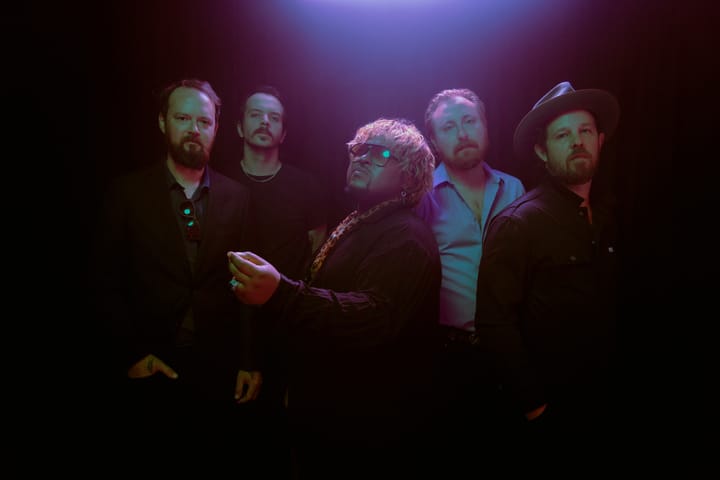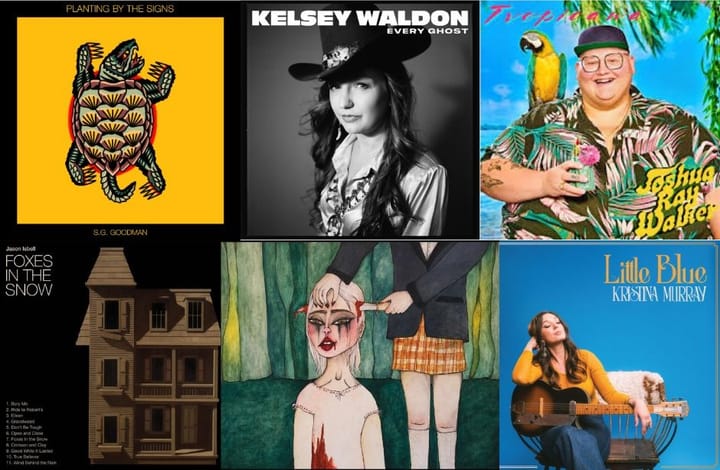Fifty-one years after his death, at the age of 29, my wife and I decided to spend New Year's doing a self-made tourist jaunt across Hank Williams' Alabama. I know, the idea of "Hank Williams Heritage Tourism" smacks of inauthentic commercialism. But we were undeterred. We're from Alabama, damn it! We consoled ourselves with geography-equaling-authenticity arguments, and set off to become tourists on the Lost Highway.
A camp whose mission is to help seriously ill children, seems an unlikely site for a piece of country music history. THE CHILDREN'S HARBOR, set on Lake Martin outside of Alexander City, looks like so many other summer camps on lakes across the state. But there, at the entrance, is a historical marker: "The Hank Williams Kowaliga Cabin."
Open to the public but not advertised, for $250 a night you can rent the cabin where Hank spent some time writing songs in the summer of 1952. Using one existing photograph of the interior, the cabin has been redone to look almost exactly as it did when Hank was there the drapes, the positioning of the furniture, the wood stain have all been matched.
It's quite a beautiful and simple space two small bedrooms, each with a set of twin beds, a large living room, a small kitchen with table, and a bathroom off the back. A few of Hank's original records hang framed on the wall. After telling us about some visitors who say they can "feel the ghost" of Hank, the man who let us in asks, "You want me to stand sort of in the window so you can take a picture, make it look like Hank's in there?" After pausing to think of the potential benefits of such a picture, I decline.
Leaving Alexander City we head towards Butler County, about two and a half hours southwest. These are the back roads Hank no doubt drove to and from Kowaliga. We pass through small towns I imagine creeping with the storied bootleggers Hank so frequently visited. I put "Kawliga" (Hank's spelling) on the stereo and think of the story about how Hank, riding back to the cabin from a bootlegger, began beating out a rhythm on the dashboard, repeating, "Kawliga, kawliga." Somewhere on one of these roads he wrote the song in his head, and played it for the first time in the cabin we just left.
Next on the tour is the HANK WILLIAMS BOYHOOD MUSEUM in Georgiana. Nestled off the main drag in a neighborhood where churches rival houses for space, the house is a simple one-story affair with high ceilings and a wrap-around porch. Hank lived here with his mother from 1930 to 1934 from the age of seven to eleven. It seems an inconsequential amount of time, but it was here most people believe he first learned to play the guitar, and here that he first started drinking, at age eleven.
Up until 1993, the house was privately owned. The previous owner tells stories of strangers calling, asking about the house in the middle of the night, and pilgrims showing up on their doorstep all hours of the day. Once, a man from Germany came to the front door asking to see under the house where Hank used to sit and play his guitar.
We pay the $3 admission and walk through the house. Among the original suits, fan artwork and memorabilia from Hank's band the Drifting Cowboys, are artifacts that display the different periods of Hank's life the Louisiana Hayride, the Hadacol Caravan, the one European tour he did with the Opry. In the bedroom hang elaborate drapes adorned with music notes and the titles to all of his hits that Audrey (Hank's first wife and the mother of Jr.) had made after he died. On the wall in the hallway leading to his bedroom hangs a huge quilt, hand-made by a fan in Oklahoma, embroidered with 44 panels that chronicles each step of his life. On the opposite wall is a casual snapshot of Hank with Dallas nightclub owner Jack Ruby (Yeah. That Jack Ruby.)
As we leave, the woman at the desk tells us we should visit the HANK WILLIAMS INTERNATIONAL FAN CLUB next door. The president of the fan club, Mary Wallace, is calling for her dog Bingo, a tiny chihuahua-pug mix, as we walk up. Mary guides us through the Fan Club house, showing us her wall of photographs (pointing out photos of her with Hank III) and the newly remodeled kitchen. She grabs some extra copies of the Fan Club's past newsletters for us, and realizes that she's left the door open. Bingo is gone.
As soon as we walk out my wife and I now solidly in the hunt to find the missing dog a couple appears at the house. They've come from Massachusetts (with a strong Yankee accent to prove it) to do a pilgrimage of the sites. This is the third year they've come down, but, they tell us, last year - the fiftieth anniversary - was the best. Soon Bingo is recovered (up the hill, barking at a fenced dog five times his size) and we turn to leave. "Keep Hankin'," says Mary as we walk out the door.
We spend New Year's Eve in a less than stellar hotel in Montgomery. I console myself by the fact that it's the cheapest I could find, and it has a pool shaped like the state of Alabama. Early New Year's Day, the day that Hank died, we show up at OAK HILL CEMETERY for the next stop on the tour his memorial service. As we walk up the hill to the gravesite we pass maybe forty cars. A crowd of seventy-five or so stands in a semi-circle around the grave. I am standing by a man who wears a red, white and blue striped oxford shirt, tight black Wrangler boot-cuts, pointy black boots, Blue Blocker sunglasses, and a large black cowboy hat. He holds a cigarette and takes short drags during the service.
Standing at the grave are three men Cecil Jackson, a Montgomery native instrumental in establishing the Official Hank Williams Museum here, Braxton Schuffer, an early member of Hank's band, and Charles Carr, the man who was driving Hank's Cadillac to a show in Canton, Ohio fifty-one years ago when he stopped to check on Hank - who had been sleeping in the backseat - only to find him dead.
The service is a cross between a funeral (a reading from Psalms, an affirmation that his memory lives on) and a meeting of museum supporters. A man gets up and tells about the latest donations, and invites everyone back to the museum for an open-mike and a day of festivities. A few photographers circulate through the crowd. One walks up close and begins taking pictures of a modest looking older woman, who as the camera snaps says, "Oh goodness, oh goodness," without too much enthusiasm. I resist the urge to grab my camera and start snapping pictures in the photographer's face.
We leave the cemetery and go downtown to the storefront HANK WILLIAMS MUSEUM. The space is relatively small, smaller than the Georgiana museum, but contains some interesting artifacts. One of Hank's first guitars, photos of his funeral, the full blue suit he was wearing when he died (along with other items in the car - his slippers, a pistol, his suitcase) and the microphone from the Elite Club in Montgomery where Hank gave his last performance, three days before his death.
But the centerpiece of the museum overshadows everything else. Sitting in the middle of the main room is Hank's last car, and the place of his death a huge 1952 powder-blue Cadillac convertible restored to show-room shine. The plaque with the car says that Hank Jr. drove it all through high school, and had it in storage until the museum opened. Photographs are prohibited in the museum, but someone later tells me that Jr. will let you have your picture taken with the car for $100.
We're invited upstairs to have black-eyed peas and cornbread (it is, after all, New Year's Day). Soon afterwards, folks start coming up to the microphone to perform for the crowd. Lum York, who is now in his eighties and was the Drifting Cowboy's bass player and resident comedian, approaches the microphone and tells some jokes ("I was out at a party last night, and we were drinking. I needed some milk of magnesia. So I mixed it up with some vodka. Called it a 'Phillips Screwdriver'."), and a nine-year old country hopeful does a rendition of "Lovesick Blues" complete with nine-year old yodels. The tour is nearing an end.
On the way out, I wander through the gift shop to see if there's anything I can't live without. Its selection is more akin to the miscellany of an Alabama gas station than a museum gift-shop. T-shirts from the museum in bright orange hang next to shirts with one of the President's post 9-11 speeches superimposed over a waving American flag. A Hank Williams dashboard bobble-head sits next to an almost pint-sized "Hillbilly Shot Glass."
There is no Graceland for Hank Williams, and maybe that's as it should be. Faith Hill and Tim McGraw now own the huge ranch below Nashville where he said he intended to retire. Mary Wallace told me they're thinking of tearing it down. Maybe before they do, we'll get a chance to go out there and see it. Wouldn't that be great for the tour? Get your picture taken with Faith and Tim in front of Hank's ranch. I'll make a call tomorrow.




Comments ()